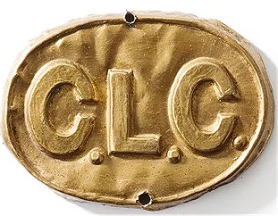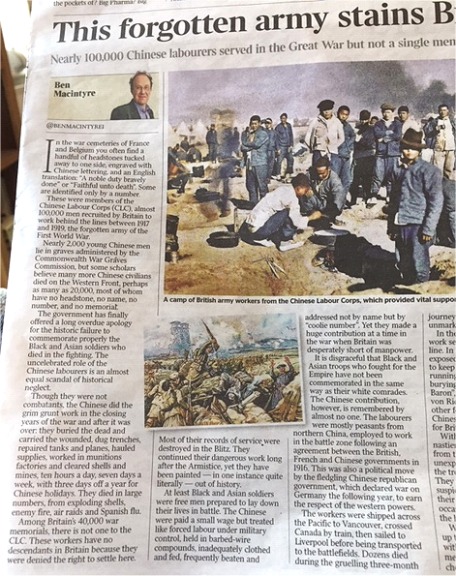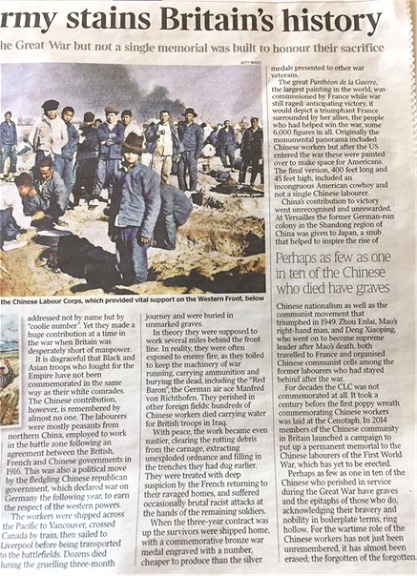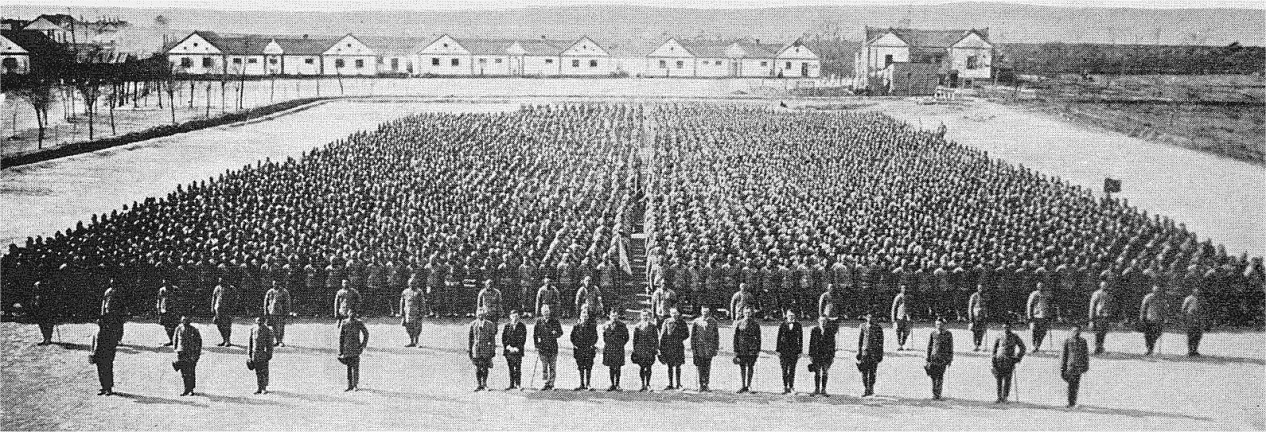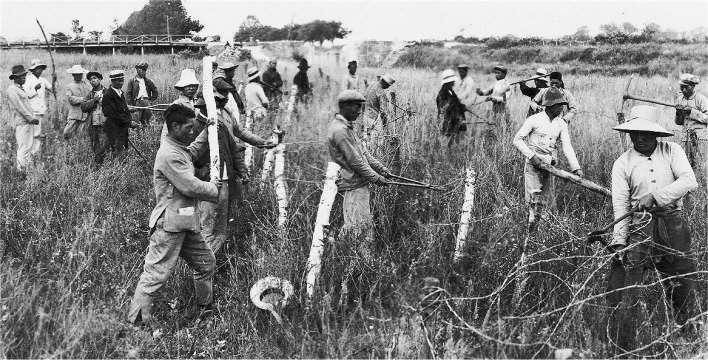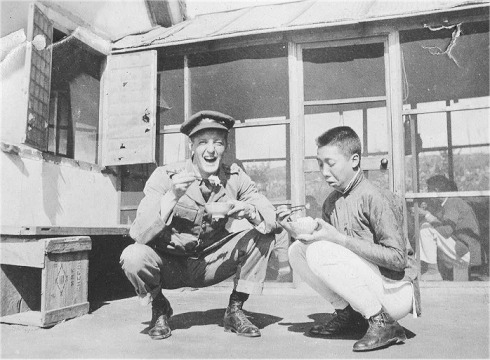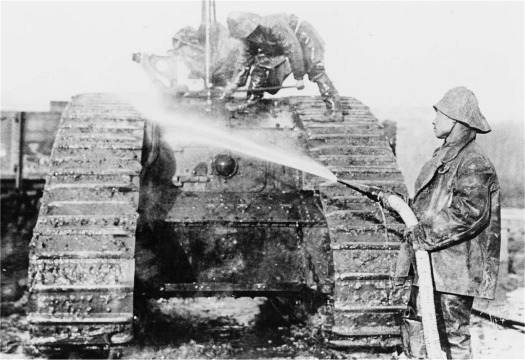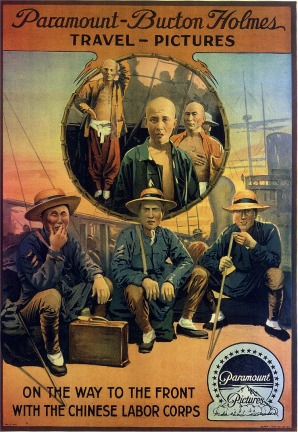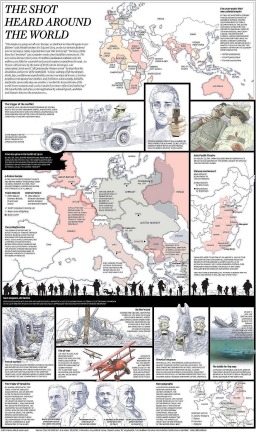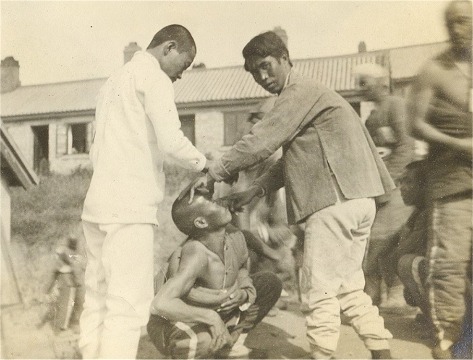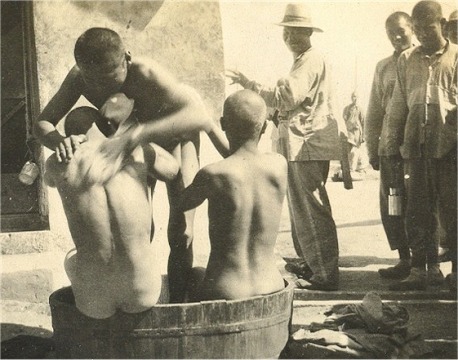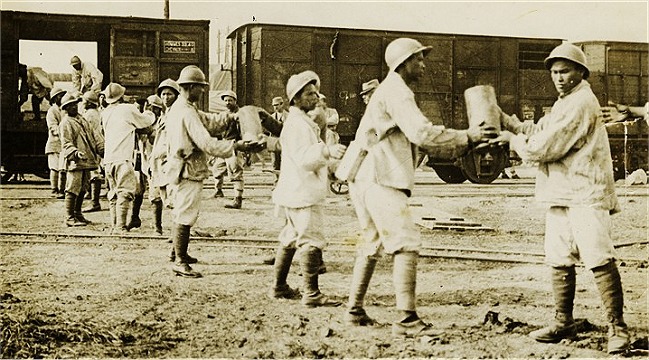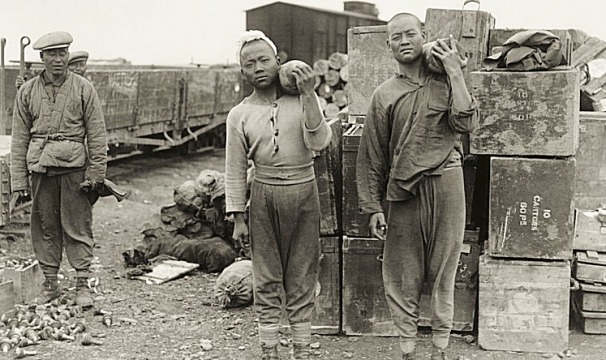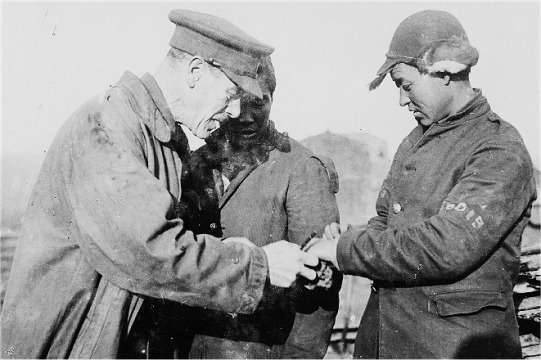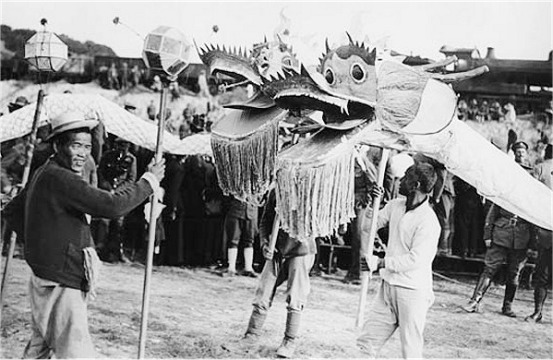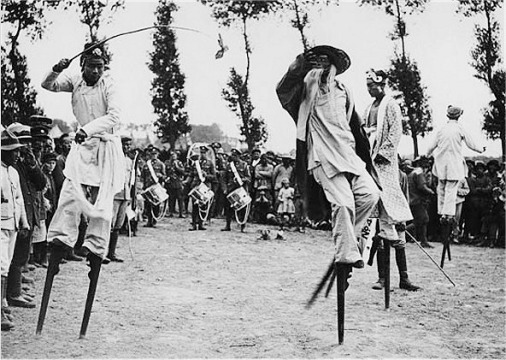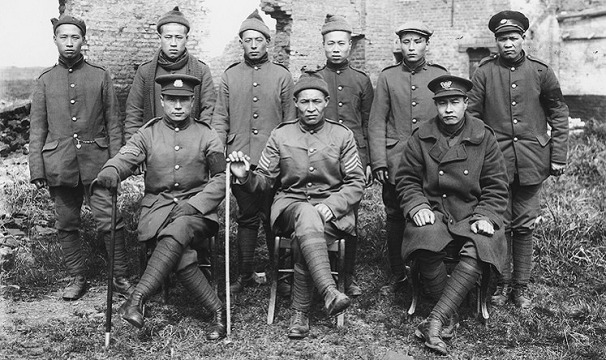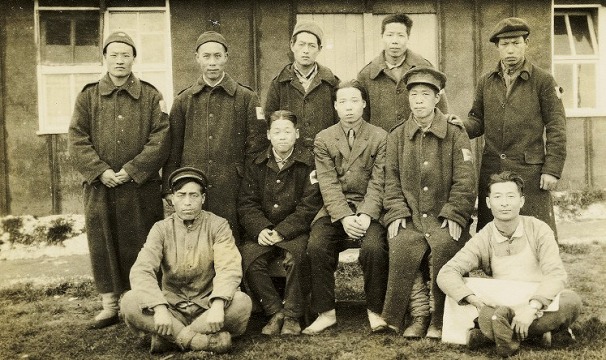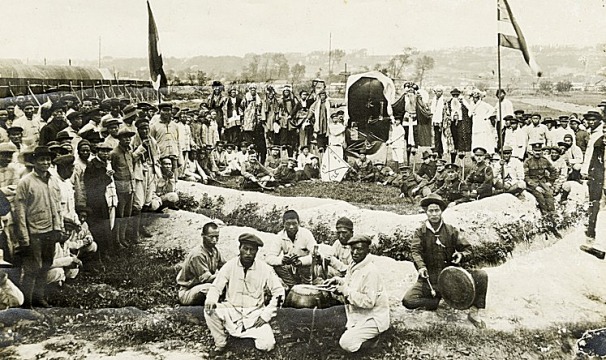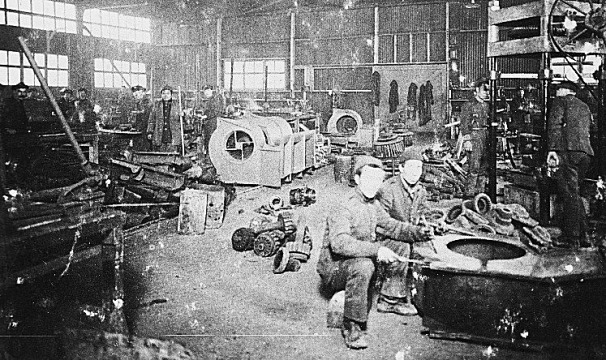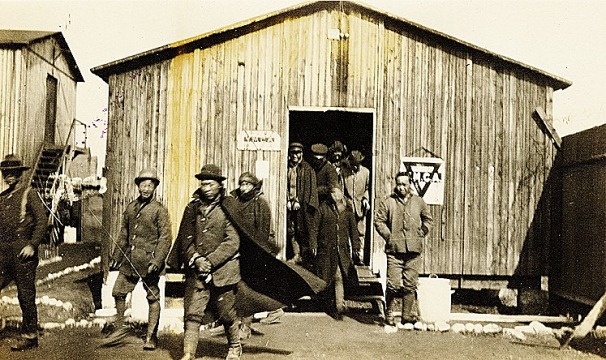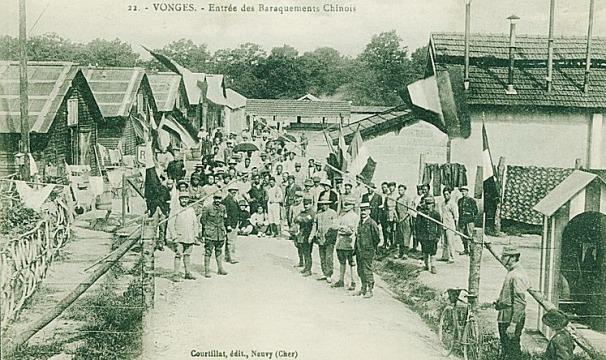In the war cemeteries of France and Belgium you
often find a handful of headstones tucked away to one side, engraved with
Chinese lettering and an English translation: "A noble duty bravely done:
or "Faithful unto death.". Some are identified only by a number.
These were members of the Chinese Labour Corps (CLC),
almost 100,000 men recruited by Britain to work behind the lines between
1917 and 1919, the forgotten army of the First World War.
Nearly 2,000 young Chinese men lie in graves administered
by the Commonwealth War Graves Commission, but some scholars believe many
more Chinese civilians died on the Western Front, perhaps as many as 20,000,
most of whom have no headstone, no name, no number , and no memorial.
The government has finally offered a long overdue apology
for the historic failure to commemorate properly the Black and Asian soldiers
who died in the fighting. The uncelebrated role of the Chinese labourers
is an almost equal scandal of historical neglect. Though they were not
combatants, the Chinese did the grim grunt work in the closing years of
the war and after it was over; they buried the dead and carried the wounded,
dug trenches, repaired tanks and planes, hauled supplies, worked in munitions
factories and cleared shells and mines, ten hours a day, seven days a week.
with three days off a year for Chinese holidays. They
died in large numbers, from exploding shells, enemy fire, air raids, and
Spanish flu.
Among Britain's 40,000 war memorials, there is not one
to the CLC. These workers have no descendants in Britain because they were
denied the right to settle here.
Most of their records of service were destroyed in the
Blitz. They continued their dangerous work long after the Armistice, yet
they have been painted -- in one instance quite literally -- out of history.
At least Black and Asian soldiers were free men prepared
to lay down their lives in battle. The Chinese were paid a small wage but
treated like forced labour under military control, held in barbed-wire
compounds, inadequately clothed and fed, frequently beaten and addressed
not by name but by "coolie number". Yet they made a huge contribution at
a time in the war when Britain was desperately short of manpower.
It is disgraceful that Black an d Asian troops who fought
for the Empire have not been commemorated in the same way as their white
comrades. The Chinese contribution, however, is remembered by almost no
one. The labourers were mostly peasants from northern China, employed to
work in the battle zone following an agreement between British, French
and Chinese governments in 1916. This was also a political move by the
fledgling Chinese republican government, which declared war on Germany
he following year, to earn the respect of the western powers.
The workers were shipped across the Pacific to Vancouver,
crossed Canada by train, then sailed to Liverpool before being transported
to the battlefields. Dozens died during the grueling three-month journey
and were buried in unmarked graves.
In theory they were supposed to work several miles behind
the front line. In reality, they were often exposed to enemy fire, as they
toiled to keep the machinery of war running, carrying ammunition and burying
the dead, including the "Rd Baron", the German air ace Manfred von Richtohofen.
They perished in other foreign fields; hundreds of Chinese workers died
carrying water for British troops in Iraq.
With peace, the work became even nastier, clearing the
rotting debris from the carnage, extracting unexploded ordinance and filling
in the trenches they had dug earlier. They were treated with deep suspicion
by the French returning to their ravaged homes, and suffered occasionally
brutal racist attacks at the hands of the remaining soldiers.
When the three-year contract was up the survivors were
shipped home, with a commemorative bronze war medal engraved with a number,
cheaper to produce than the silver medals presented to other war veterans.
The great Pantheon de la Guerre, the largest painting
in the world, was commissioned by France while war still raged anticipating
victory, it would depict a triumphant France surrounded by her allies,
the people who had helped win the war, some 6,000 figures in all. Originally
the monumental panorama included Chinese worker but after the US entered
the war these were painted over to make space for Americans. The final
version, 400 feet long and 45 feet high, included an incongruous American
cowboy and not a single Chinese labourer.
China's contributing to victory went unrecognized and
unrewarded. At Versailles the former German-run colony in the Shandong
region of China was given to Japan, a snub that helped to inspire the rise
of
Chinese nationalism as well as the communist movement
that triumphed in 1949. Zhou Enlai, Mao's right-hand man, and Deng Xiaoping,
who went on to become supreme leader after Mao's death, both travelled
to France and organised Chinese communist cells among the former labourers
who had stayed behind after the war.
For decades the CLC was not commemorated at all. It took
a century before the first poppy wreath commemorating Chinese workers was
laid at the Cenotaph. In 2014 members of the Chinese community in Britain
launched a campaign to put up a permanent memorial to the Chinese labourers
of the First World WAr, which has yet to be erected.
Perhaps as few as one in ten of the Chinese who perished
in service during the Great War have graves and the epitaphs of those who
do, acknowledging their bravery and nobility in boilerplate terms, ring
hollow. For the wartime role of the Chinese workers has not just been unremembered,
it has almost been erased; the forgotten of the forgotten.
The peace talks that ended the war had an enormous impact
on Chinaís future. When the war ended in November 1918, China planned its
delegation for the Paris Peace Conference, hoping to finally achieve full
control of its mainland territory. Japan had taken over Shandong province.
But China was given only two seats at the Paris Peace Conference to Japanís
five, since the latter had contributed combat troops. The continued occupation
of Shandong by Japan was confirmed.
China was deeply angry at the Versailles Treaty and was
the only country at the postwar peace conference to refuse to put a signature
on it. A student-led protest called for political and social changes and
the return of Shandong province. This resulted in Chinaís turn towards
socialism in 1921 with the foundation of the Chinese Communist Party.
If the controversy over the peace talks and the Versaille
Treaty had not happened, China might never have become Communist.
